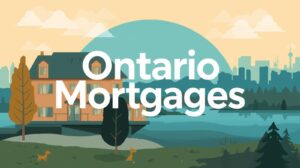There are two types of mortgages – Open vs. closed.
Most homeowners obtain closed mortgages when they expect to own the home for a longer period. These mortgages offer lower rates as compared to Open mortgages with the caveat that there would be a penalty if you break the mortgage before the maturity of the term.
If, however, you are expecting to sell the home in the near term, you may opt for an open mortgage because, unlike closed mortgages, these mortgages do not have any penalties associated with their repayment. The caveat here is that the interest rate would be higher than its “closed” counterpart because you could repay the loan at any time, without consequence…
So, within the closed mortgage realm, there are currently 2 forms of penalties that exist. Most homeowners are familiar with the “3 months interest penalty” which is self-explanatory. If you have a variable mortgage, then this is the only kind of penalty that would apply to you if you “broke” your mortgage term…
Having said that, if you have a fixed mortgage, then a 3-month interest penalty isn’t necessarily the “maximum consequence” you would need to consider. This is because there is another type of penalty called “interest rate differential”. This type of penalty is triggered if the calculated amount of the penalty here, is greater than the 3-month interest penalty. That’s right, the potential penalty you pay here could be the higher of the two…
When does interest rate differential apply?
We won’t go over the exact formula that goes into the interest rate differential, but instead, we will explain the general idea behind it. For example, let’s say you obtained a fixed mortgage at 5% on a 4-year closed term and you were about to refinance your property with 2 years left on the term. At the same time, mortgage rates happen to come down to 3.5%. In this example, the bank would lose higher interest returns on 2 more years of the mortgage. At the same time, you could benefit from switching to another lender and getting a mortgage at the lower market rates that are available at that time. This scenario would likely trigger the “interest rate differential penalty” which would calculate the difference between your rate and the current rate + account for how much time you have left on the mortgage term. This penalty could come to tens of thousands of dollars and is meant to recoup the expected losses the bank would face over the remaining term.
Since fixed closed-term mortgages offer the banks a stable future indication of a certain return on investment, they rely on the interest rate differential penalty as a way to protect those expected returns and deter homeowners from constantly bouncing around and following the lowest rates as often as they might…
So what do I know what my penalty would be?
Although online tools and conversations with mortgage professionals can help you wrap your head around how it all works, the best advice is that you speak with your existing mortgage provider. Only they can provide you with the most accurate feedback as you what your mortgage allows you to do and the exact penalty you would pay at any given time. It is best not to guess when it comes to these things because the last thing you’d want is to show up to the law office to finalize everything, and then learn you owe $20k in penalties. Maybe you would have approached things differently if you had this information at the beginning….
Having said that, we’d be happy to discuss your situation and plans, so please feel free to reach out to us so we can continue to share our guidance. – (905) 455-5005



